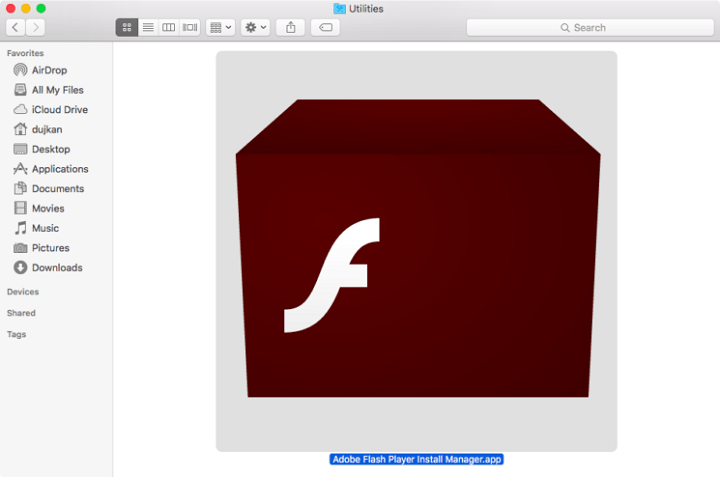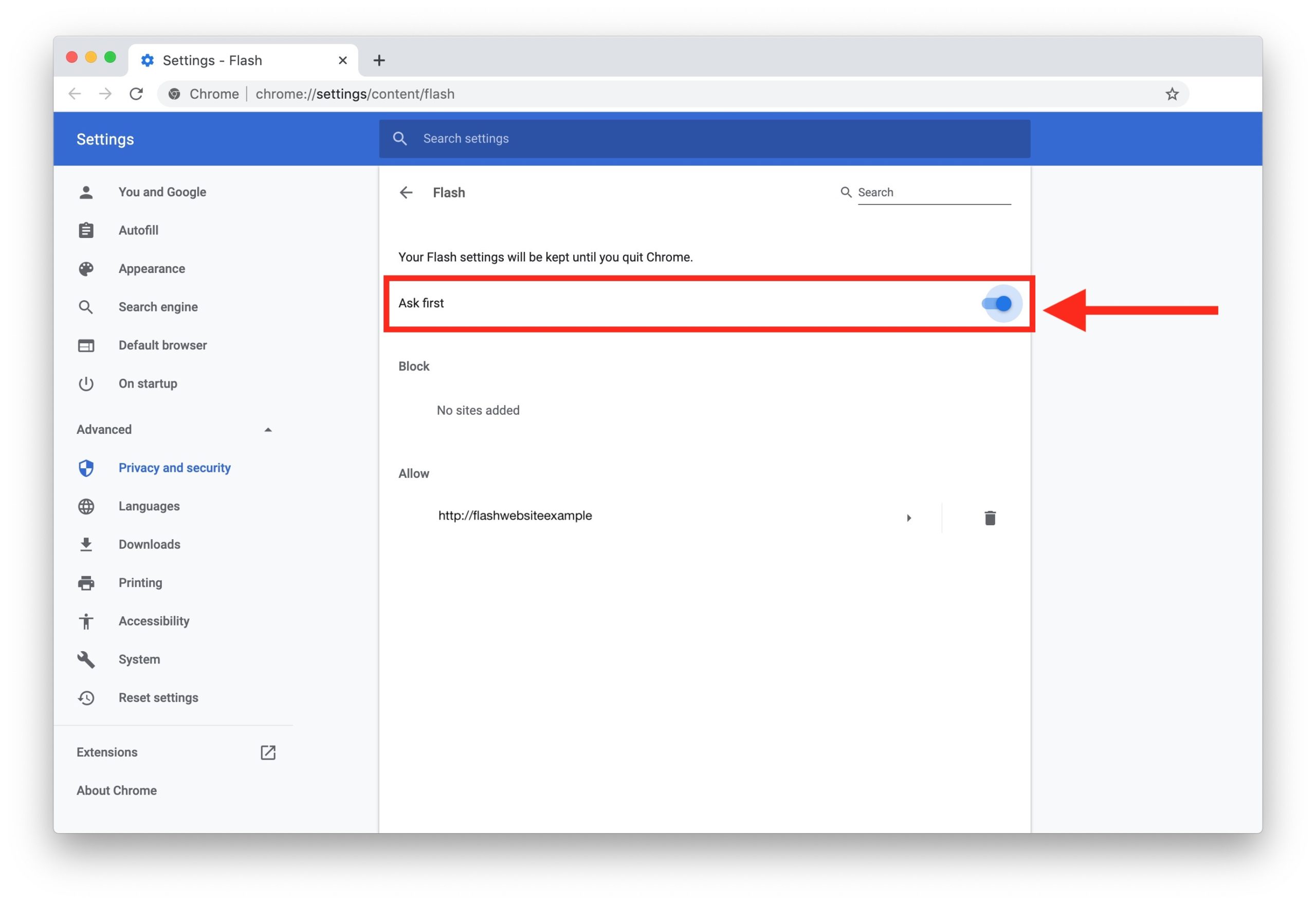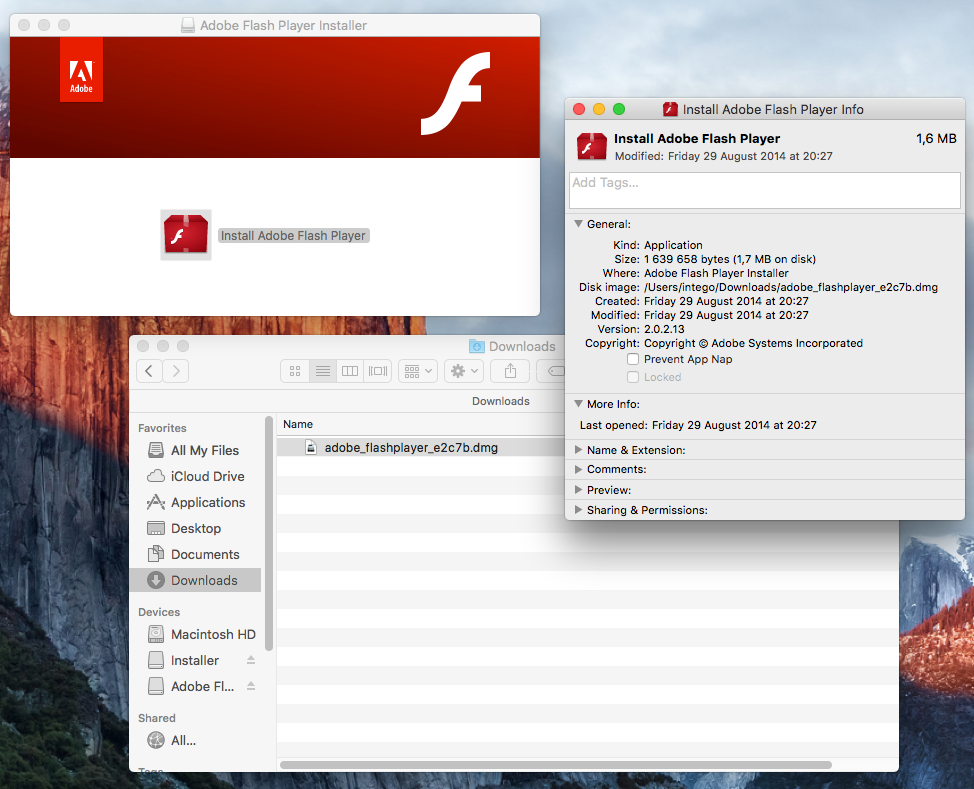Ahead of the macOS Big Sur launch, Apple has released Safari 14 to the general public, granting Mojave and Catalina users access to the company's latest browser.
Many of the changes in the browser update are skin deep. The tab bar, for example, is redesigned to show more open pages, and displays favicons by default. Users can preview the content of pages by hovering over their corresponding tab in the bar. And the start page can now be customised with user-selected background images and links.
Another way to access Flash on an iPad or iPhone is to stream it directly from your Mac or PC using Parallels Access. You run applications on your computer that you view and can control from your. Starting with Firefox version 62 for Mac, Adobe Flash applets will be run in a more secure mode using process sandboxing. The sandbox is known to prevent the following features from working: Print to PDF from the Flash print dialog Print to Open in Preview from the Flash print dialog Quicklook in the File - Open menu Saving files from a Flash.
On the security front, Safari finally and conclusively purges support for Adobe Flash. This is hardly a surprise. Adobe will stop developing Flash by the end of the year, prompting every other browser developer to remove it (kinda), not least due to its overall obsolescence and endemic security problems.
Separately, Safari 14 takes a leaf from Brave's book, allowing users to see how many trackers have been blocked through a new Privacy Report page.
Surprise! Apple launches iOS 14 today, and developers were given just 24 hours' notice
READ MOREThose looking to jump on the bleeding edge can download Safari 14 through the System Update tool. As mentioned, you need to be using one of the two latest versions of macOS – and therefore have a Mac introduced after 2012. Of course, there are slightlynaughty ways to get around this, if you're not prepared to invest in a new iShiny.
As is the case with most recent versions of Safari, it's unavailable for Windows as Apple discontinued support in 2012.
This isn't the only bit of browser news coming from the great doughnut in California – iOS 14 now allows punters to set a default mail and browser app other than the stock options.
Support for this is seemingly available on an app-by-app basis, although Edge, DuckDuckGo, Brave, Firefox, and Google Chrome are all known to work. ®
Adobe Flash Player is a free software plug-in used by web browsers to view multimedia, execute rich Internet applications, and stream video on your Mac.
Adobe Flash Player is the most popular multimedia player plug-in available. However, recently there have been security concerns which has threatened its popularity as users seek safer alternative solutions. Opera, Firefox and Chrome contain built-in versions of Flash running in sandbox mode. This method is safer than running Flash as a plugin. However, currently the reality is that you still may need the Adobe Flash Player on your Mac because many websites will not work well if you uninstall it. Here I’ll show you how to install Adobe Flash Player and how to set it up correctly.
How to install Adobe Flash Player on your Mac.
1. Go to http://get.adobe.com/flashplayer/ to download the Adobe Flash Player installer.
2. By default, the installer package will be downloaded to your “Downloads” folder.

3. Select the file on your Mac and double click to install it.
4. Select “Allow Adobe to install updates (recommended)” and click “DONE” to complete the installation.
If you installed Adobe Flash Player, but still cannot view online videos on certain websites, you need to check Adobe Flash Player on your browsers.
How to set up Adobe Flash Player on various browsers.
Safari
1. Launch Safari and go to the Apple menu bar and click Preferences.
2. Select the Websites tab and select On for “When visiting other websites.”
3. Refresh the browser tab, or restart the browser.
Google Chrome
1. Launch Chrome and type chrome://settings/content in the address field.
2. Select “Ask first (recommended)” and turn it on.
3. Refresh the browser tab or restart the browser.
Opera
1. Launch Opera and go to the Apple menu bar and click Preferences.
2. Select the Websites tab and then select “Allow sites to run Flash” Kensington lock for macbook pro.
3. Refresh the browser tab or restart the browser.
Firefox
1. Launch Firefox and go to the Apple menu bar and click Tools – Add-ons.
2. Click the Plugins tab and turn the “Shockwave Flash” to “Always Activate.”
Note: (SWF (Shock Wave Flash) is a special format created by Macromedia, which has been acquired by Adobe. It is widely used in web design, animation production and other fields.)
For enhancing the user experience and security, Adobe is always trying to improve Adobe Flash Player. However, sometimes when you view a website, a Flash Player upgrade popup appears. Most people would click the “update” button to update their Flash Player, but this could be a false popup used by hackers to compromise your Mac. This is a method hackers use to trick you into downloading adware and malware through a false popup.
Be careful and don’t trust any automatic updates of Adobe Flash Player. Here I will tell you how to install real Flash Player updates and set it up.
How to update Flash Player on Mac safely
1. Go to the Apple menu bar and select System Preferences.
2. Select Flash Player.
3. Select the Updates tab and select “Allow Adobe to install updates (recommended)”. (Note: The Flash plug-in is officially updated 1~2 times a month, so selecting this option avoids frequent update.)
4. You may now notice that the Flash Update settings now shows NPAPI and PPAPI plugins. Let me explain them.
NPAPI – used by Safari, Firefox

PPAPI – used by Chromium, Opera and Chrome (Chrome’s implementation is built in)
5. Click Check Now to confirm that you currently have the latest version installed.
If you had clicked a false popup and downloaded adware, don’t worry, the Apple App Store has many antivirus apps, such as Trend Micro’s Antivirus One, that you can use to do a free scan.
Follow the steps below in case you downloaded a fake Adobe Flash Player.
1. When you first install Antivirus One, click “Pattern Update” to make sure your virus pattern is up to date. We suggest you update the virus pattern every day.
2. After the first installation, we highly suggest you perform a full scan of your Mac to check all files for possible infections. The Full scan will take more than one hour.
3. If you still find adware and a full scan has not found any viruses, we recommend you use Adware Cleaner. You can access Adware Cleaner in the left panel of the Antivirus One window.
How to uninstall Adobe Flash Player
Adobe Flash Player for the Mac is a plug-in, not a Mac OS X application. When you try to uninstall Adobe Flash Player from your Mac, you might find that this plug-in is not so easy to delete. For example, you might see this message:
Cannot find Adobe Flash Player in your Applications folder.
Flash For Macro Lens
In this case, Adobe Flash Player could not be removed and no reason was given. The following steps show how to uninstall Adobe Flash Player with no remaining parts.
Flash Player For I Mac
1. Go to the /Applications/Utilities/ folder on your Mac and double-click the Adobe Flash Player Install Manager app.
2. Click Uninstall to begin the process.
3. Type the password and click Install Helper.
Flash For Macro

4. If your browser is running, the following window will appear. Select “Force Close All” to continue.
5. After the uninstaller removes the Adobe Flash software from your Mac, click Done.
Related posts:

